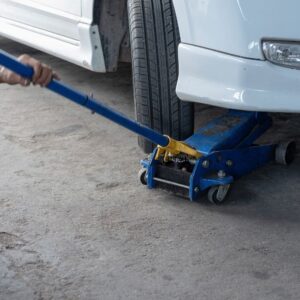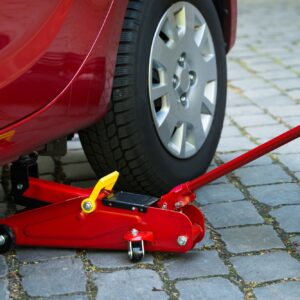Bottle jacks and floor jacks are used to lift vehicles, granting access to the undercarriage and other components beneath the vehicle that would normally be difficult to reach.
Thanks to their unique appearances, the two can easily be differentiated. The tricky part, however, is knowing when to use one over the other.
What is a Bottle Jack?
Bottle jacks are known for their bottle-like shape. They’re mounted vertically, which lets them lift tremendous amounts of weight at the expense of stability.
Of course, if you’re not on hard, stable ground, no mechanical jack is stable when lifting a vehicle.
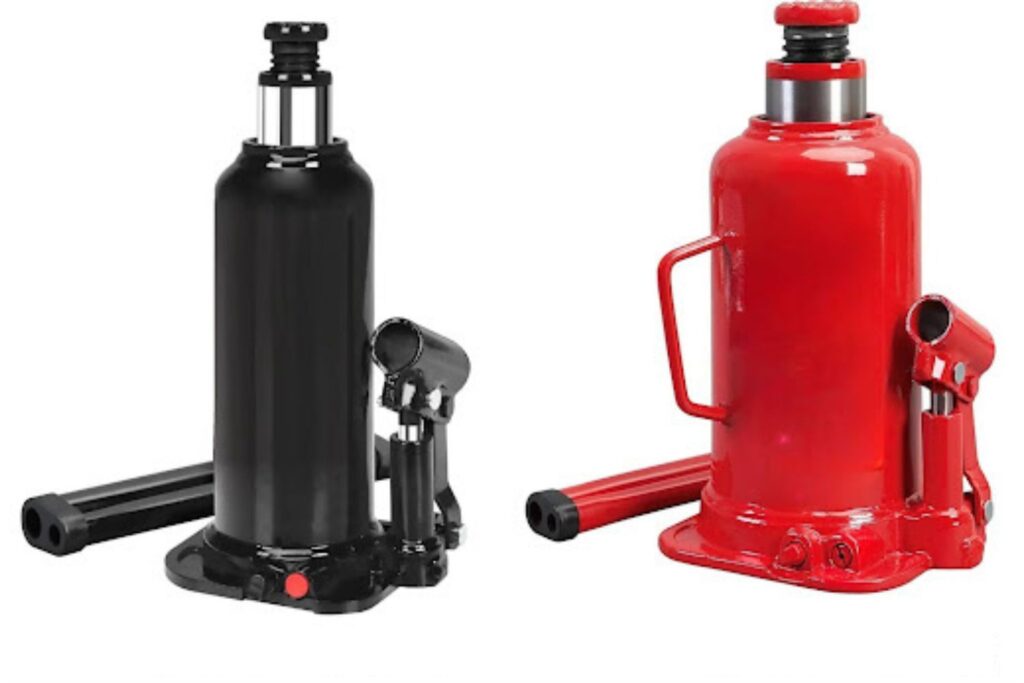
These jacks are typically smaller and more portable than floor jacks, and they can easily fit in the trunk of your vehicle.
A bottle jack will typically cost you from about $30 to $100, depending on the weight capacity of the jack and whether it’s operated by a handle or air pressure. An air-over-hydraulic bottle jack costs a lot more than a standard jack with a handle.
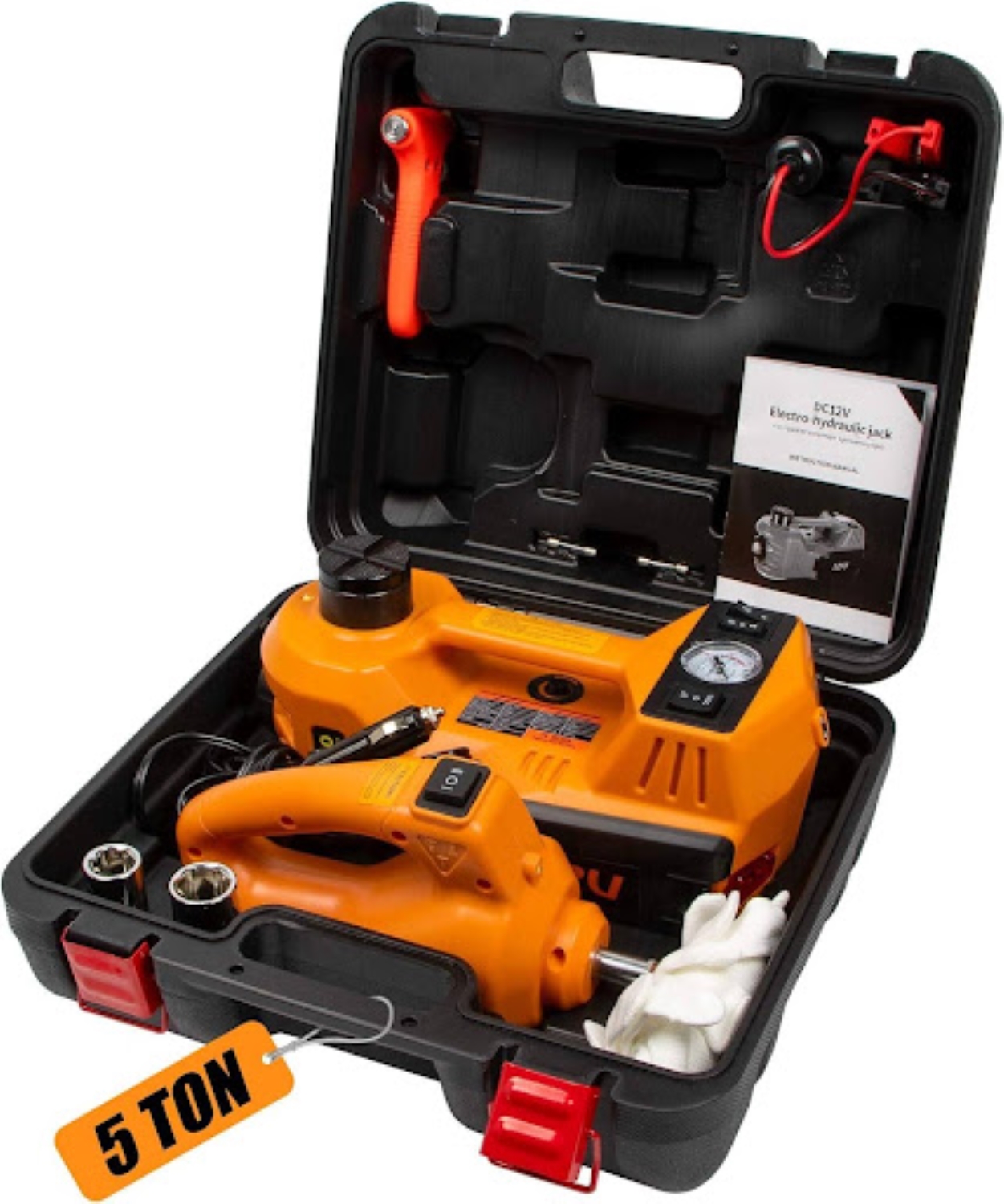
Pros
- Capable of lifting more weight than floor jacks
- Smaller and more portable
- Easier to carry and can fit inside the trunk of a vehicle
- Generally cheaper than floor jacks
Cons
- Not as stable as floor jacks due to the size of the base
- Has a minimum lift height; it’s always taller than a floor jack to begin with
What is a Floor Jack?
Unlike bottle jacks, floor jacks are mounted horizontally. Floor jacks lie flatter against the ground and have steel casters for easy positioning and moving around the shop.
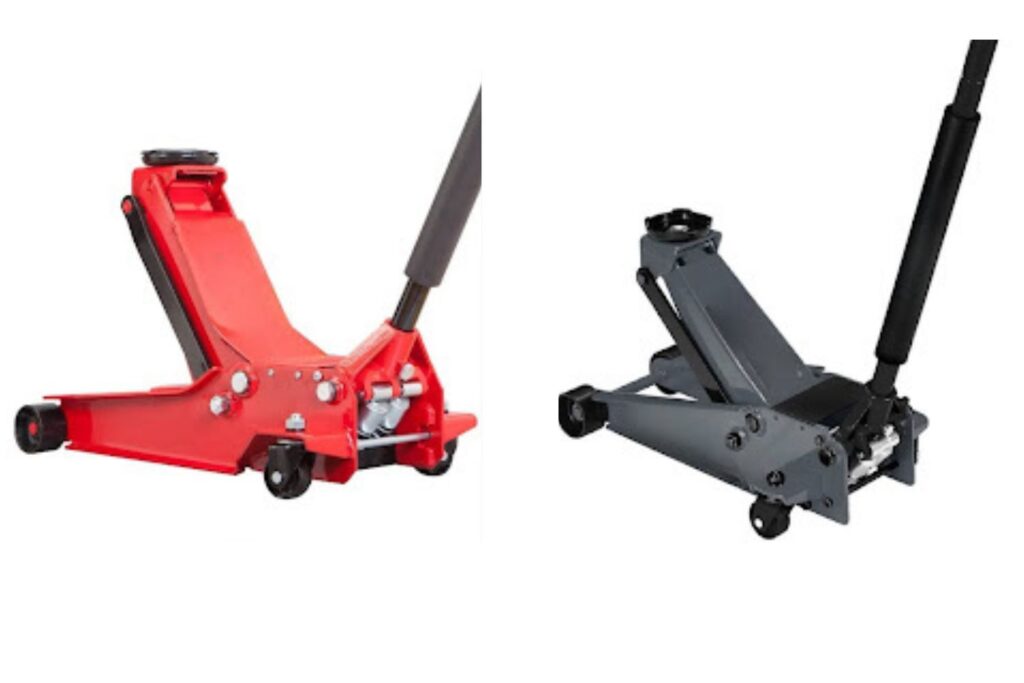
When you’re jacking a vehicle up with a floor jack, however, the vehicle needs to be on a very hard surface so the wheels can roll as the vehicle is being lifted – this is extremely important. On any type of jack, you need to make sure the lift point where the jack contacts the car can support the weight of the car without damage. Never trust any jack to support the vehicle while you’re underneath the car. Always use jackstands and always jack the vehicle up on a hard surface rather than on dirt or asphalt, which can be very soft on a hot summer day.
Drivers and mechanics can operate floor jacks by using the long pump handle, letting them raise and lower the vehicle with ease.
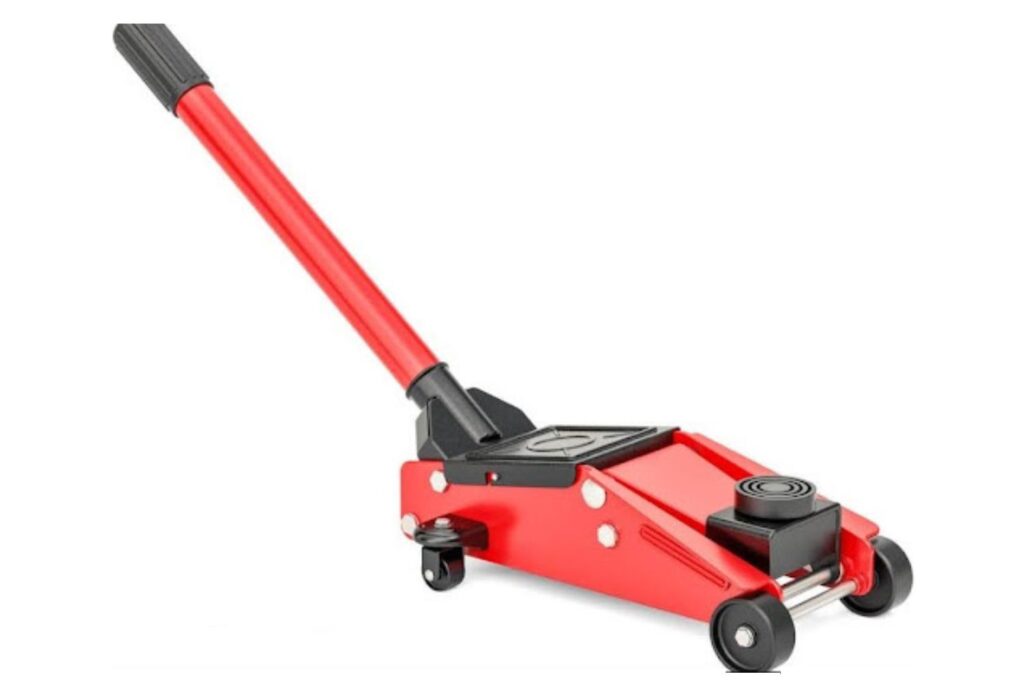
On any type of jack, you need to make sure the lift point where the jack contacts the car can support the weight of the car without damage. Never trust any jack to support the vehicle while you’re underneath the car. Always use jackstands and always jack the vehicle up on a hard surface rather than on dirt or asphalt, which can be very soft on a hot summer day.
– Richard McCuistian, ASE Certified Master Automobile Technician
Pros
- Stable, sturdy, and capable of lifting most vehicles
- Easy to set up and use compared to bottle jacks
- Safer due to its wider, flatter frame
- Maneuvers easily thanks to its casters
Cons
- Difficult to pack due to its bulk, weight, and size
- Flat shape which means it can’t lift as much weight
Key Differences Between Bottle Jacks and Floor Jacks
Bottle jacks and floor jacks both have their pros and cons. Despite this, both are used for the same purpose: to make it easier for drivers and mechanics to lift heavy vehicles.
So what exactly are the key differences between bottle jacks and floor jacks?
- Bottle jacks are tall and narrow, whereas floor jacks are short and wide
- Bottle jacks are usually a bit cheaper and smaller than floor jacks
- It’s easier to carry bottle jacks thanks to their shape and small size
- Bottle jacks can lift heavier vehicles than floor jacks
- Floor jacks can lift vehicles higher than bottle jacks
- Floor jacks have a handle, making them easier to use
- Bottle jacks have a higher minimum height than floor jacks
Bottle Jacks vs Floor Jacks: What’s More Effective?
Generally speaking, floor jacks are much better at lifting vehicles for repairs, inspection, and maintenance compared to bottle jacks. They are stronger and have larger lift points, meaning they can be used to lift from almost any part of the vehicle.
When it comes to stability, floor jacks are also generally superior since bottle jacks are more likely to fall over due to their taller, thinner structure. Drivers of taller vehicles such as trucks and SUVs might have an easier time using bottle jacks because it’s easy to put a large block of wood under a bottle jack and there’s room under a higher vehicle to use a bottle jack.
This doesn’t mean that floor jacks are better than bottle jacks in every way. On average, they’re more powerful and capable of lifting more weight. Their bottle-like shape also makes it easier to pack, store, and carry.
All in all, floor jacks are better because they’re more stable, can lift vehicles higher, and are safer to use, especially when it comes to your average car. Safety is important when it comes to working with any machine, especially since mishaps can either damage your vehicle or leave you with injuries.
Despite this, owners of heavier vehicles might want to invest in bottle jacks in case a floor jack isn’t strong enough to lift their rides. Bottle jacks have greater lifting power but aren’t as safe to use because of how small and narrow they are.
Frequently Asked Questions
Here are some of the most commonly asked questions about bottle jacks and floor jacks.
When should a bottle jack be used over a floor jack?
Bottle jacks should be used to lift vehicles that are too heavy for a floor jack. They’re also good for emergencies because they can easily be stored in the trunks of cars and can be carried easily compared to floor jacks.
When should a floor jack be used over a bottle jack?
Floor jacks are generally better than bottle jacks because they’re safer and easier to use. In most cases, you should use a floor jack over a bottle jack simply because you’re less likely to get into an accident. They can lift vehicles higher, making them ideal for undercarriage maintenance and repairs.
Can you keep jacks inside the trunk of your vehicle?
Bottle jacks are generally much narrower and easier to carry than floor jacks, making them easier to bring inside your vehicle. You can pack them inside your trunk, making them good portable jacks. But consider also the smaller floor jacks sometimes come in a carrying box specifically for carrying in your trunk.
Any information provided on this Website is for informational purposes only and is not intended to replace consultation with a professional mechanic. The accuracy and timeliness of the information may change from the time of publication.










